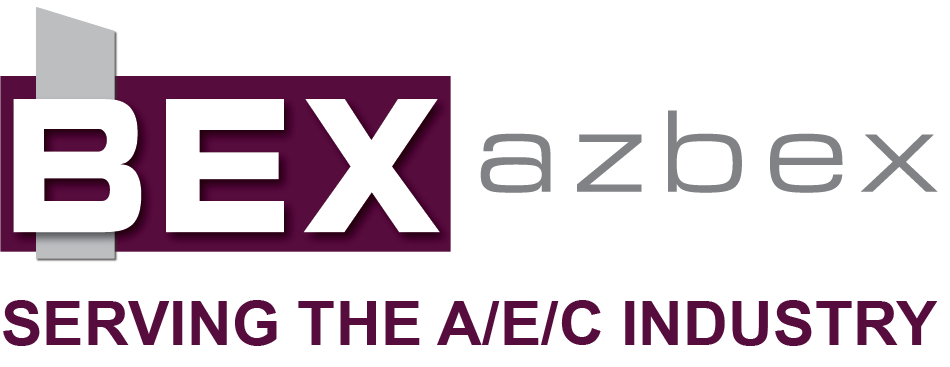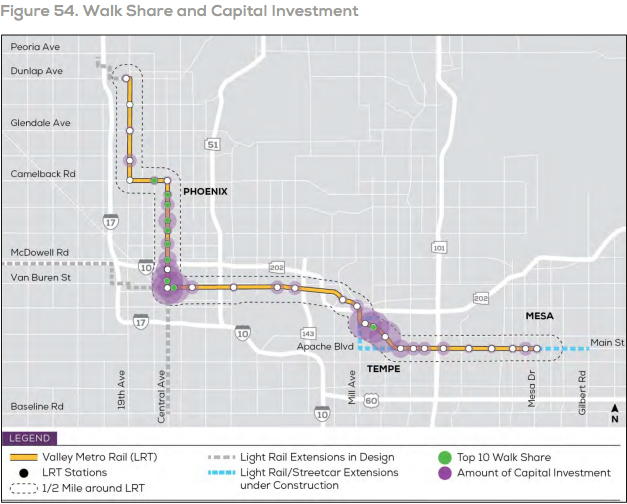By Roland Murphy for Arizona Builder’s Exchange
Despite ongoing challenges and concerns in various parts of the Valley, the economic growth generated as a byproduct of the Light Rail’s introductions and various expansions have proven impossible to deny.
Valley Metro last week released, “Building Communities and Enhancing Lives: A Quality of Life Report,” detailing the positive impacts the program has had over the course of its operations. According to the report and its accompanying announcement, to date there has been $11B of investment and 35,000 jobs created within one-half mile of the 26-mile corridor. Service started with the original 20 miles of operation in December, 2008. The report’s stated goals were to, “evaluate the changes in the light rail corridor over the past decade that make the corridor a better place to live, work and play…, by evaluating data sourced from Valley Metro, state, regional and jurisdictional agencies and community stakeholders.”
Development by the Numbers
The development impact of light rail in the areas immediately surrounding the operations area is undeniable. The report sides more than 50MSF of new construction spread across 344 individual projects over the past 10 years, broken down as follows:
- Residential: 51 percent
- Commercial: 36 percent
- Education: 11 percent
- Public: 2 percent
There are nearly 25,500 new residential units and more than 4,000 hotel rooms in the corridor area. While both the public and private sectors have invested in development across the zone, a significant majority — 74 percent — has been private. The corridor is now home to 25,457 new residential units and 4,017 hotel rooms. Investment has come both from the public sector and the private sector, but the vast majority (74 percent) of new capital in the corridor has come from private sector developments.
The system’s station areas have proven significantly appealing for development, the report states, noting that the increase in property values around light rail stations is even greater than the increases associated with freeway exits. In addition to the increase in property values, the report notes developers eagerly snatched up land near station areas as they were announced.
“For example,” it says, “from 2006 to 2009, 20 investment grade office buildings were under construction within half-mile of the light rail stations, totaling approximately 4.5MSF.”
With 10 years of operation under its belt, vacant land in proximity to light rail sites has been considerably reduced. In 2004, the corridor had 3.11 square miles of vacant land. As of 2017, only 1.17 square miles remained available for development, a change of 62 percent.
One particular point of pride the report notes is the that the development has not all been slash and burn to replace older properties with new — bringing into play a total of 101 adaptive reuse, redevelopment and renovation projects. “These rehab projects have brought more than $1.8B in capital investment into the corridor and breathed new life into more than 7MSF of property across the different use types,” the report notes. “Infill developments and adaptive reuse projects along the light rail corridor are helping to revitalize and strengthen the region’s urban core.”
As even casual observers of the Valley market will note, mixed-use development is the name of the game in many areas, and nowhere is that more evident than in the light rail corridor. The report cites 119 mixed use developments in the zone, with a total investment value of more than $7B. These developments include more than 16,000 residential units and 13MSF of commercial space.
“If You Build It, They Will Come”
In March of this year, the U.S. Census Bureau reported Maricopa County as the nation’s number one region for population growth, adding nearly 74,000 people – a 1.7 percent increase — over 2017. However, the Phoenix-Mesa-Scottsdale metroplex added 89,000 in 2017, the fourth largest gain of any U.S. metro area, according to an article in The Arizona Republic.
The light rail corridor certainly saw its share of population shift, and while Millennials may get the majority of headlines when it comes to reporting on development trends, older residents have served as a key demographic powerhouse. Since light rail’s launch, there has been a 33 percent rise in residents older than 65 and 23 percent in 50-64.
However, the report says, “The growth of the 20-24 population in the light rail corridor far surpassed that of the region as a whole, likely due to the growth of ASU and other educational institutions along the corridor, especially with the opening of ASU’s downtown Phoenix campus. When comparing that population from before light rail to after, an increase of over 40 percent is observed.”
Signaling both a stability in existing development and investment and the potential for ongoing growth to continue the trend, the report notes that while the middle of the age pyramid in the corridor is contracting, it has grown on both ends. The 2005-2009 corridor median age was 28.5, while in the 2012-2016 era, it dropped to 27.6, implying those who have chosen to make the corridor home could be there for decades to come, and can draw in many similar residents over the decades to come as expansion continues to roll ahead.
“Light rail has been a major economic driver that has spurred more than $11B in capital investments along the tracks since it opened 10 years ago,” said Phoenix Mayor and Valley Metro Rail Chair Thelda Williams. “It’s been a catalyst for positive change, connecting people to education and career opportunities and connecting neighborhoods. The regional transportation system has become integrated into the daily lives of thousands of residents across the Valley.”
The entire report is available for download here.


